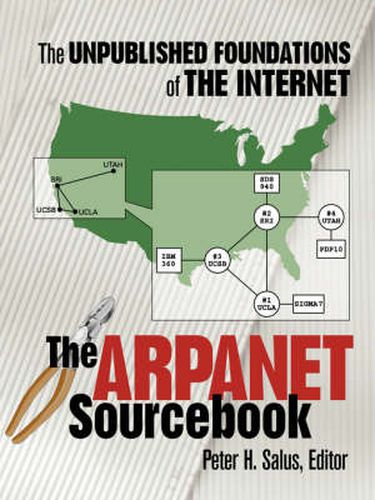The ARPAnet Sourcebook: The Unpublished Foundations of the Internet

The ARPAnet Sourcebook: The Unpublished Foundations of the Internet
This title is printed to order. This book may have been self-published. If so, we cannot guarantee the quality of the content. In the main most books will have gone through the editing process however some may not. We therefore suggest that you be aware of this before ordering this book. If in doubt check either the author or publisher’s details as we are unable to accept any returns unless they are faulty. Please contact us if you have any questions.
In the early days of computer networking IBM mainframes could only connect to other IBM mainframes, Burroughs only to other Burroughs, etc. Beginning in 1967 the US Defense Department’s Advanced Research Projects Agency (ARPA) office sponsored development of a heterogeneous network compatible with computers from any manufacturer. That R&D effort, one of the most successful in history, resulted in the on-time, on-budget construction of the revolutionary ARPANET, the immediate predecessor of today’s Internet. The ARPANET Sourcebook: The Unpublished Foundations of the Internet reproduces the seminal papers, reports, and RFCs that led to the birth of modern network computing. Most appear here in book form for the first time. Part A, Imagining the ARPANET, covers the initial studies of network feasibility and includes: the introductory and concluding chapters of Paul Baran’s seminal but little-known RAND research report On Distributed Communications in which packet switching was first conceptualized. the classic 1968 paper The Computer as a Communication Device by J.C.R. Licklider and Robert Taylor, respectively the ARPANET’s earliest proponent and the ARPA administrator who pushed the development project. Part B, Planning the ARPANET includes: scans of the earliest RFCs ( Requests for Comments ), some publicly available here for the first time. RFCs were in effect the design documents for the ARPANET and later the Internet. the 1968 ARPA-commissioned SRI study that modeled a heterogeneous network and concluded that it was indeed feasible. forewords by Steve Crocker (author of RFC #1) and Leonard Kleinrock (noted author and head of the UCLA computing lab that hosted the first ARPANET node). Part C, Building the ARPANET, reproduces the quarterly technical reports from the government’s contractor Bolt Beranek and Newman contemporaneously describing the development group’s progress, difficulties encountered, and final success. Dave Walden, former BBN VP and a key member of the ARPANET team, has contributed a retrospective Foreword. Other noteworthy material: historical perspectives from Peter Salus, Robert Taylor, Willis Ware, Michael Padlipsky, and Les Earnest, and a long-forgotten RFC which anticipated JAVA by more than 20 years.
This item is not currently in-stock. It can be ordered online and is expected to ship in 7-14 days
Our stock data is updated periodically, and availability may change throughout the day for in-demand items. Please call the relevant shop for the most current stock information. Prices are subject to change without notice.
Sign in or become a Readings Member to add this title to a wishlist.

